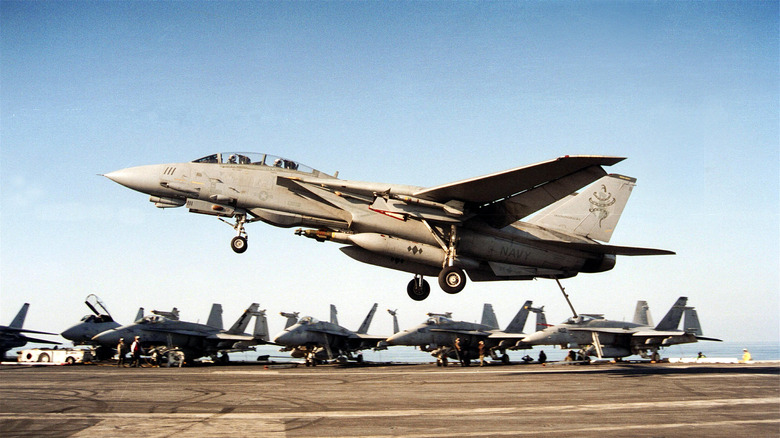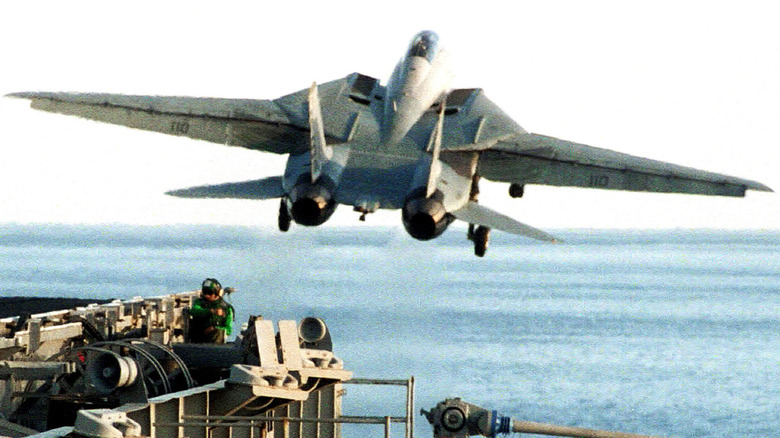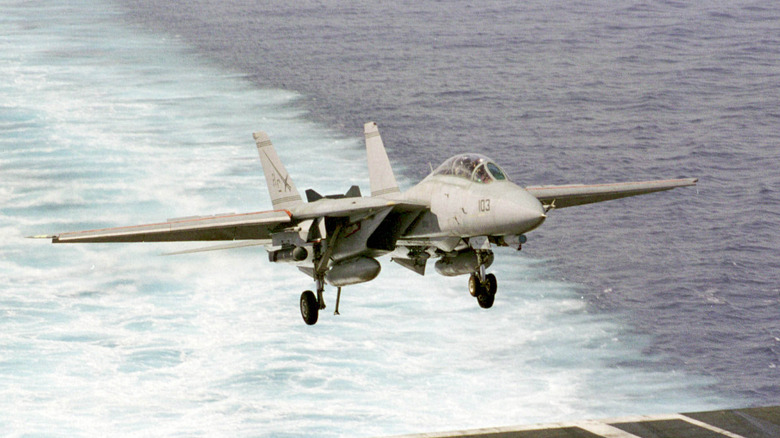The Legendary Top Gun Fighter Jet That Will Take Your Breath Away
Aircraft carrier-borne combat planes became feasible for large-scale combat in World War II, especially against the Imperial Japanese Navy. Carriers allowed Allied Forces to launch dive-bombers and fighter planes to both engage Imperial forces in ship-to-ship combat and strike targets deep within enemy territory. It proved to be a vital part of the war effort and cemented the place of multiple large aircraft carriers in the U.S. Navy's arsenal.
As time went on, nuclear-powered aircraft carriers were in wide use in America's carrier fleet, starting with the U.S.S. Enterprise in 1961. Nuclear power allowed carriers to stay out to sea for decades at a time. With such advanced technology powering the ship, the onboard fighters, reconnaissance planes, bombers, and helicopters needed to keep up with the times as well. For pilots in the 1970s and 1980s who had the need for speed, like Tom Cruise's Pete "Maverick" Mitchell in the 1986 film "Top Gun," there was no better plane than the Grumman F-14, the "Tomcat."
A supersonic interceptor
The F-14 Tomcat and its further numerical designations were carrier-based air superiority fighter jets first used by the United States Navy in 1972. Right from its first flight on December 21st, 1970, the F-14 was one of the most advanced fighter jets in the sky. It was designed to intercept potential Soviet bombers from practically anywhere in the world. Its two-engine swept wing design allowed the Tomcat to reach extraordinary speeds of up to 1,544 miles per hour or a little over Mach 2.
It had an operational range of 2,400 miles on its own. To put that into perspective, in a fictional scenario, a Tomcat launched from a carrier off the coast of Tampa, Florida could reach Los Angeles, California without refueling during the trip. But working in conjunction with the aircraft carrier combined with airborne refueling tankers, the Tomcat was capable of operating pretty much anywhere in the world.
Over three decades of service
For armament, the Tomcat had just about any other fighter plane in the world topped. It could carry upwards of eight air-to-air missiles and could hit targets from over 90 miles away with a well-timed AIM-54 Phoenix air-to-air missile. If a large variety of missiles weren't enough, it had a 20mm rotary cannon onboard for good measure. Service in the early stages of Operation Iraqi Freedom saw F-14s equipped with Joint-Direct Attack Munition (JDAM) guided bombs that could accurately knock out targets from several miles away.
After over 30 years of operation, the F-14 retired from the Navy in 2006 and was officially replaced with the F-18 Hornet carrier-based fighter. However, there are a number of F-14s still in service flying under the flag of Iran, multiple decades after the plane first flew.
The F-14 took naval aviators on the highway to the danger zone faithfully over decades of service and thousands of successful missions.


